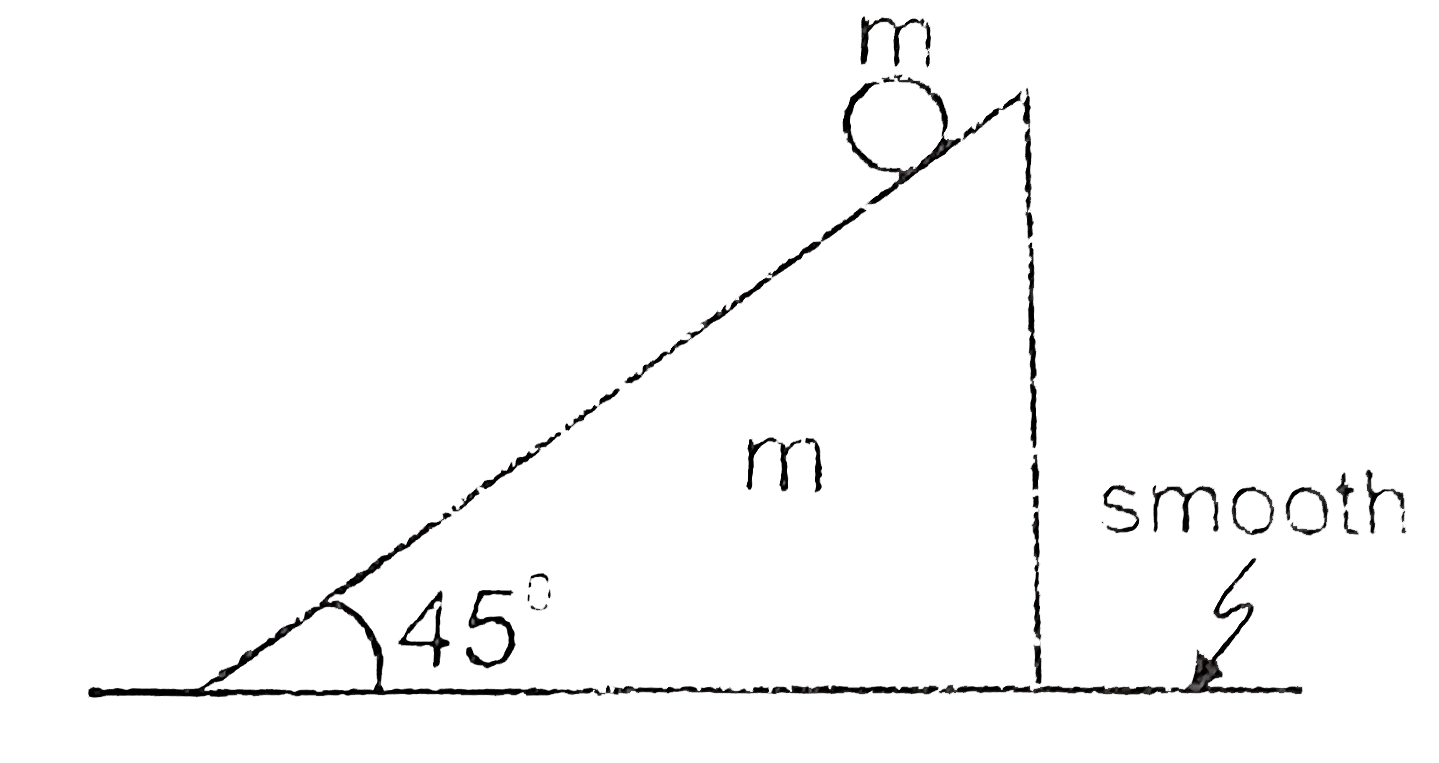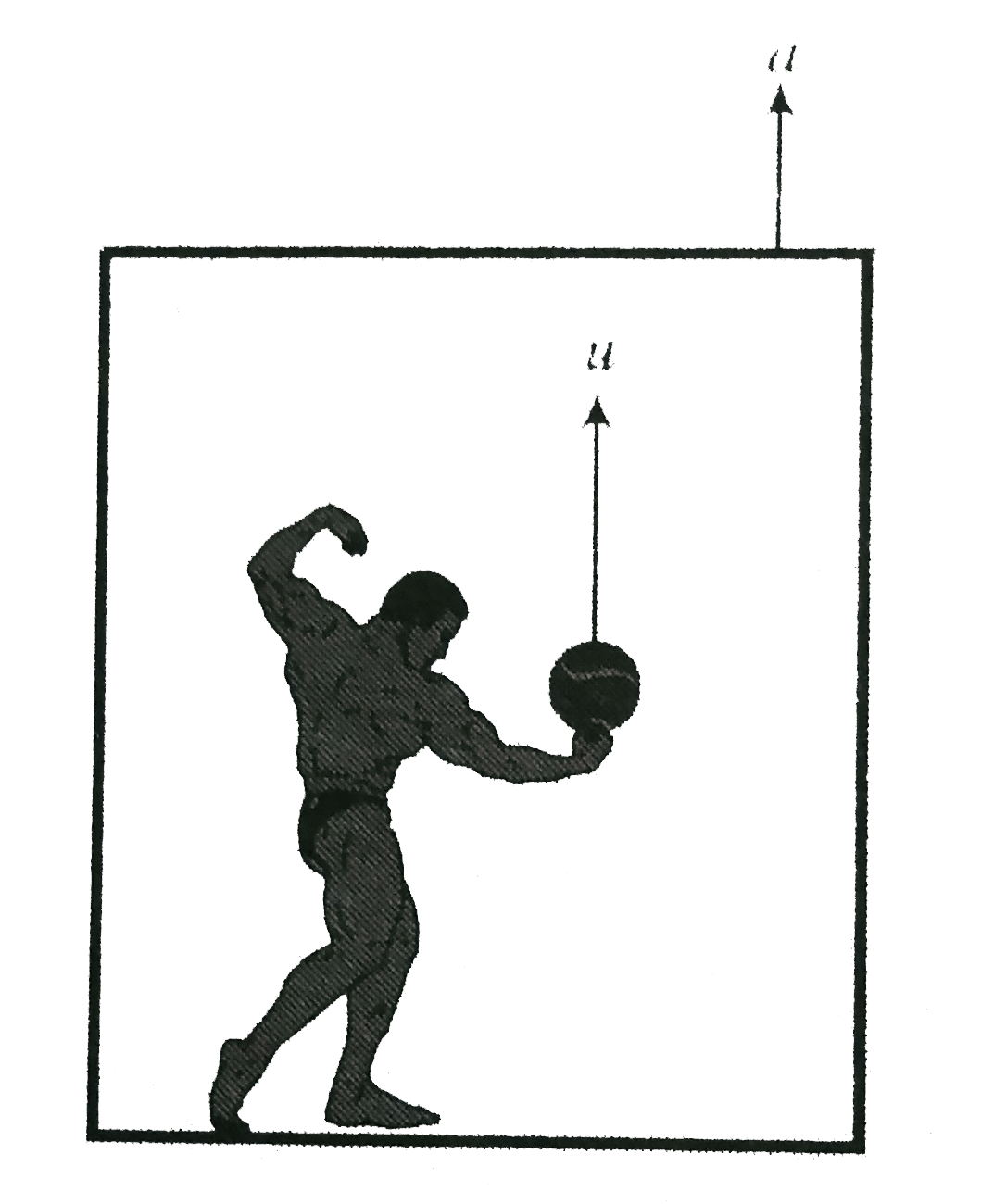A small ball of mass m is thrown upward with velocity u from the ground. The ball experiences a resistive force mkv2 where v is its speed. The maximum height attained by the ball is :
12ktan−1.ku2g
12kln(1+ku2g)
1kln(1+ku22g)
1ktan−1.ku22g
To solve the problem of finding the maximum height attained by a small ball of mass m thrown upward with an initial velocity u while experiencing a resistive force mkv2, we can follow these steps:
1. Identify Forces Acting on the Ball:
The forces acting on the ball are:
- The gravitational force mg acting downward.
- The resistive force mkv2 also acting downward.
Therefore, the net force F acting on the ball can be expressed as:
F=−mg−mkv2
2. Apply Newton's Second Law:
According to Newton's second law, the net force is equal to mass times acceleration:
ma=−mg−mkv2
Dividing through by m:
a=−g−kv2
3. Relate Acceleration to Velocity:
We know that acceleration a can also be expressed as the derivative of velocity with respect to time:
a=dvdt
We can also express dvdt in terms of dvdx (using the chain rule):
a=dvdx⋅v
4. Set Up the Differential Equation:
Substituting a into our equation gives:
−vdvdx=g+kv2
Rearranging this, we have:
−vdvdx=g+kv2
5. Separate Variables and Integrate:
Rearranging gives:
vg+kv2dv=−dx
Now we can integrate both sides. The left side will be integrated with respect to v from u to 0 (as the ball comes to rest at maximum height), and the right side will be integrated from 0 to H (the maximum height).
6. Perform the Integration:
The integral on the left can be simplified by using a substitution. Let t=g+kv2, then dt=2kvdv. The limits change accordingly.
After integration, we find:
H=−12kln(gg+ku2)
7. Simplify the Result:
Using properties of logarithms, we can rewrite the result:
H=12kln(g+ku2g)
Final Result
The maximum height attained by the ball is:
H=12kln(1+ku2g)
The forces acting on the ball are:
- The gravitational force mg acting downward.
- The resistive force mkv2 also acting downward.
F=−mg−mkv2
According to Newton's second law, the net force is equal to mass times acceleration:
ma=−mg−mkv2
Dividing through by m:
a=−g−kv2
We know that acceleration a can also be expressed as the derivative of velocity with respect to time:
a=dvdt
We can also express dvdt in terms of dvdx (using the chain rule):
a=dvdx⋅v
Substituting a into our equation gives:
−vdvdx=g+kv2
Rearranging this, we have:
−vdvdx=g+kv2
Rearranging gives:
vg+kv2dv=−dx
Now we can integrate both sides. The left side will be integrated with respect to v from u to 0 (as the ball comes to rest at maximum height), and the right side will be integrated from 0 to H (the maximum height).
The integral on the left can be simplified by using a substitution. Let t=g+kv2, then dt=2kvdv. The limits change accordingly.
H=−12kln(gg+ku2)
Using properties of logarithms, we can rewrite the result:
H=12kln(g+ku2g)
The maximum height attained by the ball is:
H=12kln(1+ku2g)
Topper's Solved these Questions
Similar Questions
A ball is thrown with velocity V0 from ground in vertical upward direction, if particle experiences resistance force mkv2 . where v is the speed of particle, m mass of the particle and k is a positive constant. Find maximum height reached.
View SolutionA ball is thrown vertically upwards with a velocity of 10 ms−1. It returns to the ground with a velocity of 9 ms−1. If g=9.8 ms−2 , then the maximum height attained by the ball is nearly (assume air resistance to be uniform)
View SolutionA ball of mass m is thrown upward with a velocity υ. If air exerts an average resisting force F, the velocity with which the ball returns to the thrower is
View SolutionA baseball of mass m is thrown upward with some initial speed. If air resistance is neglected, what is the force on the ball: (a) when it reaches half its maximum height, and (b) when it reaches its peak?
View SolutionAn open elevator is ascending with constant speed v=10m/s. A ball is thrown vertically up by a boy on the lift when he is at a height h=10m from the ground. The velocity of projection is v=30m/s with respect to elevator. Find
(a) the maximum height attained by the ball.
(b) the time taken by the ball to meet the elevator again.
(c) time taken by the ball to reach the ground after crossing the elevator.
View SolutionA ball of mass 'm is released from the top of a smooth movable wedge of mass 'm'. When the ball collides with the floor, velocity is 'v'. Then the maximum height attained by the ball after an elastic collision with the floor is : (Nelect any edge at the lower end of the wedge)

View SolutionA ball is thrown vertically upward with a velocity of 20 m/s. Calculate the maximum height attain by the ball.
View SolutionA lift is moving up with acceleration a A person inside the ligt throws the ball upwards with a velocity u relativeto hand.
a. What is the time of flight of the ball?
b. What is the maximum height reached by the ball in the lift?

View SolutionA ball is thrown vertically upward with a velocity u from the top of a tower. If it strikes the ground with velocity 3u, the time taken by the ball to reach the ground is
View SolutionA ball is thrown upward with an initial velocity V0 from the surface of the earth.The motion of the ball is affected by a drag force equal to mγv2 (where m is mass of the ball, v is its instantaeous velocity and γ is a constant).Time taken by the ball to rise to its zenith is :
View Solution
